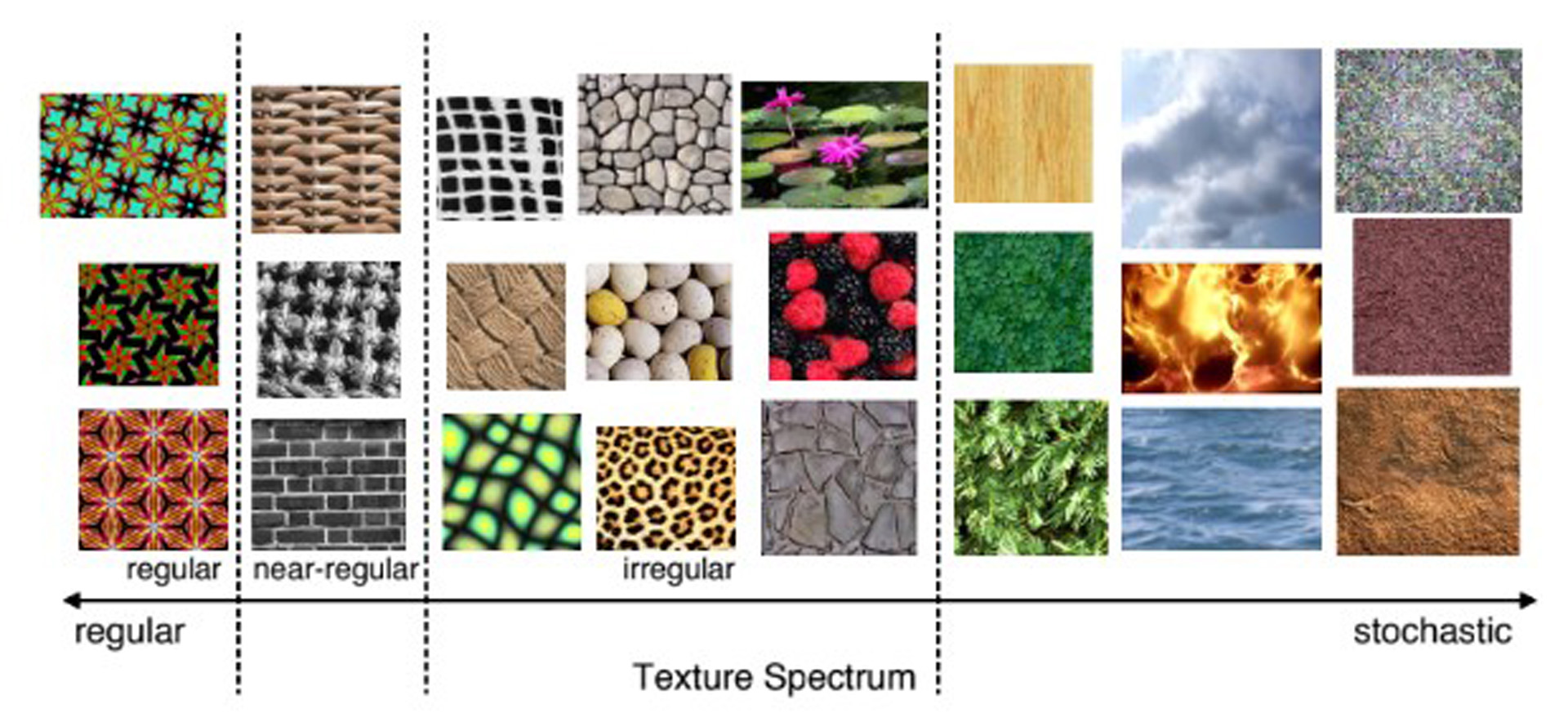“A Comparison Study of Four Texture Synthesis Algorithms on Near-regular Textures” by Lin, Hays, Wu, Kwatra and Liu
Conference:
Type(s):
Entry Number: 016
Title:
- A Comparison Study of Four Texture Synthesis Algorithms on Near-regular Textures
Presenter(s)/Author(s):
Abstract:
Textures are conventionally classified as either regular or stochastic. However, many real-world textures fall somewhere in-between these two extremes. Most textures, along with regular and stochastic textures, form a texture spectrum on which the structural regularity varies continuously towards randomness(Figure 1). Ideally, a good texture synthesis algorithm should be able to handle all types of textures on the spectrum; however, the performance of existing texture synthesis algorithms varies on different types of textures. Moreover, the performance of a synthesis algorithm is usually judged by visually examining the results, which could be subjective and inconsistent among different people. To better evaluate the synthesis results, an objective and consistent criterion in addition to the visual inspection would be very useful.
The goal of this study is to compare the performance of texture synthesis algorithms in a more consistent way. To satisfy this goal, testing samples should cover an appropriate scope of textures on the spectrum, and more importantly, the testing samples should have a consistent property so that it is easy to verify if the property is faithfully preserved in the synthesis process. For these reasons, we consider a particular type of texture in this paper: near-regular textures[ Liu et al. 2004b]. Regular textures are simply periodic patterns where the color/intensity and shape of all texture elements are repeating in equal intervals. In the real-world, however, few textures are exactly regular. Most textures we see are near-regular, e.g., cloth, basket, windows, brick walls, carpet, and blanket. A near-regular texture can be regarded as a statistical distortion of a regular, wallpaper-like congruent tiling. This statistical distortion can be synthesized and manipulated in a texture synthesis process[Liu et al. 2004a].
References:
1. Kwatra, V., Schödl, A., Essa, I., Turk, G., and Bobick, A. 2003. Graphcut textures: Image and video synthesis using graph cuts. In ACM SIGGRAPH, 277–286.
2. Liang, L., Liu, C., Xu, Y., Guo, B., and Shum, H. 2001. Real-time texture synthesis by patch-based sampling. ACM Transactions on Graphics 20, 3, 127–150.
3. Lin, W.-C., Hays, J., Wu, C., kwatra, V., and Liu, Y. 2004. A comparison study of four texture synthesis algorithms on regular and near-regular textures. Tech. Rep. CMU-RI-TR-04-01, Robotics Institute, Carnegie Mellon University.
4. Liu, Y., Lin, W.-C., and Hays, J. 2004. Near-regular texture analysis and manipulation. In ACM SIGGRAPH. To appear.
5. Liu, Y., Tsin, Y., and Lin, W.-C. 2004. The promise and perils of near-regular texture. International Journal of Computer Vision. To appear.




